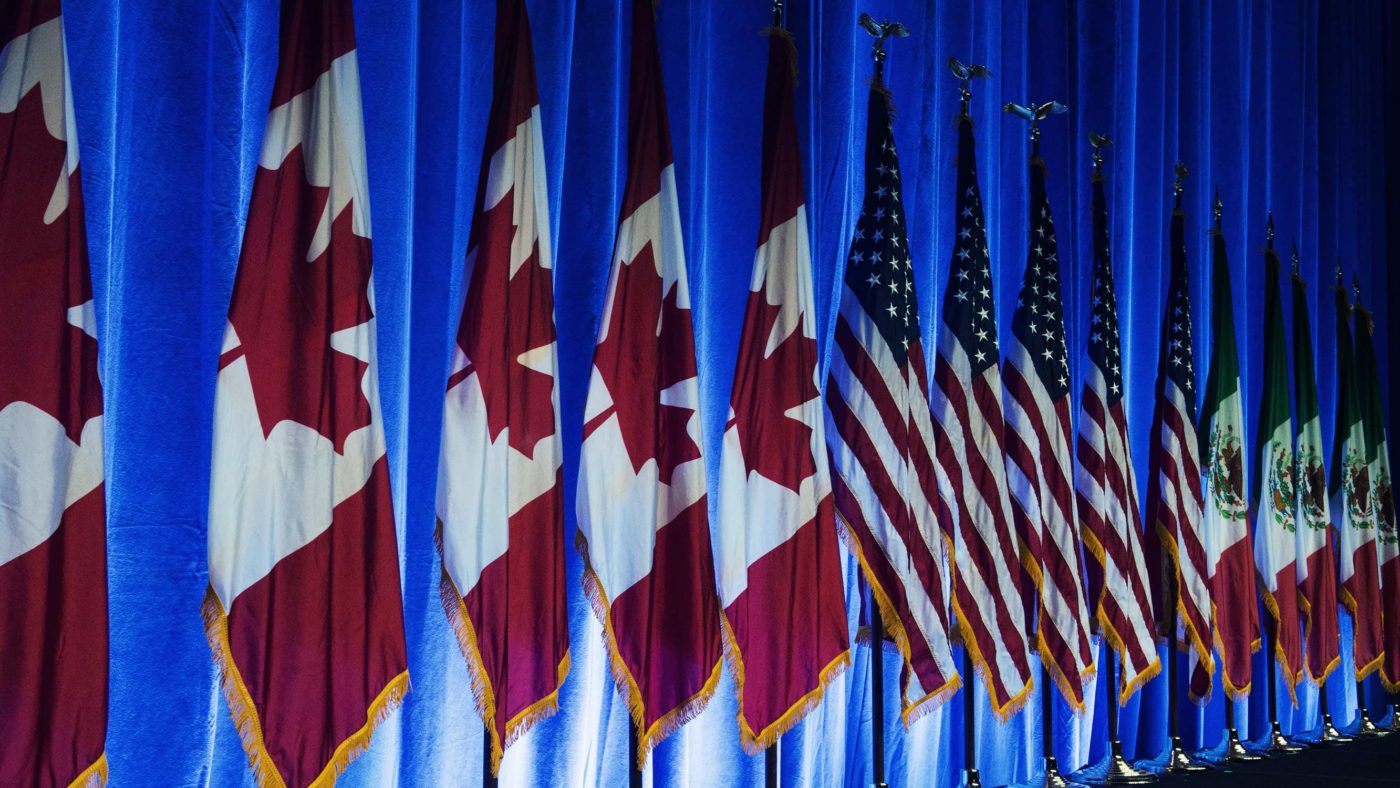As the Nafta renegotiation opened this week, U.S. Trade Representative Robert Lighthizer spared little time in setting a tone that sharply contrasted with his Canadian and Mexican counterparts.
Lighthizer reiterated Donald Trump’s familiar talking point that “Nafta has fundamentally failed many, many Americans, and needs major improvement,” starting with addressing US trade deficits.
By contrast, in their opening remarks, Canada’s Foreign Affairs Minister, Chrystia Freeland, and Mexico’s Secretary of Economy, Ildefonso Guajardo, struck a collegial note, highlighting the benefits of Nafta to all three countries, and the importance of modernizing the agreement.
Though these divergent views on the priorities for renegotiation do not bode well for a quick deal, there are many points on which Canada, Mexico and the United States could agree on.
First, everyone seems to agree that Nafta, which came into force 23 years ago, does not address many new issues that have developed since then. For example, e-commerce was just beginning to develop when Nafta was signed, and is now a central part of international trade.
Canada and Mexico have maintained strict restrictions on online purchases from companies in other countries, allowing orders valued at only $20 and $50, respectively, to qualify for duty free entry. The US, on the other hand, allows for purchases of up to $800 to enter duty free, and has pushed for Canada and Mexico to raise their thresholds. Including provisions on e-commerce will be an important step forward for Nafta, and borrowing from those developed in the Trans-Pacific Partnership (TPP) would be a good place to start.
International trade barriers have also undergone a transformation in the years since Nafta took effect. A 2016 study by the National Board of Trade in Sweden found that non-tariff barriers are increasingly used as a tool of protectionism. Addressing some of these barriers through regulatory cooperation efforts would be extremely valuable.
Canada’s recent trade agreement with the European Union (CETA) is the first to include a regulatory cooperation chapter, which provides a forum for discussing regulatory divergence. Canada and the United States already have a mechanism for regulatory cooperation (outside Nafta), which could be expanded on for this purpose.
Then there are the parts of Nafta that time has revealed to be flawed, and badly in need of an update. For instance, the core dispute settlement provision (Chapter 20), by governments can bring complaints against each other for violating the agreement, has not functioned well. In fact, some complaints have been dropped or never seen the light of day simply because defending governments have prevented the establishment of a panel to hear the dispute, effectively blocking the process.
Other elements of dispute settlement could also be revised. Rules on investor-state disputes (Chapter 11) and reviews of antidumping and countervailing duties (Chapter 19) raise concerns about special protections given to corporations and the role of international courts in applying domestic law. The three governments should conduct a review of these provisions and consider amending them or dropping them entirely, as there is little evidence to suggest these ad-hoc panels are more effective than pursuing cases through existing domestic courts.
Third, there are longstanding trade frictions that have gone unresolved. Facing domestic industry pressure, Canada’s supply management system for dairy, poultry and eggs was excluded from the original negotiations.
The liberalisation of services was also limited, and barriers to telecommunications and broadcasting are prevalent in both Canada and Mexico. The renegotiation could try to address these protectionist barriers.
Though the softwood lumber dispute may not be resolved in the course of negotiations, an effort to do so would be beneficial for both sides. The United States should live up to both its Nafta and WTO obligations, and open its market to Canadian lumber. If the US continues to be unhappy with the result, it should consider filing a dispute under the WTO’s subsidies agreement to settle the issue.
While some common ground or compromise may be found in these three overarching categories of potential reforms, there remain a number of sticking points that could derail the modernisation of the agreement altogether. For instance, if Ambassador Lighthizer devotes a great deal of effort to “fixing” the trade deficit, much energy will be wasted on what most economists agree is a non-issue.
Making rules of origin more restrictive would also be a major distraction, as Nafta already has the most stringent rules of origin of any trade agreement in the world.
At present, Nafta rules require cars to have 62.5 per cent North American content; increasing this figure, or requiring a greater portion of it to be US value added, could push companies to forgo Nafta preferential treatment entirely, and source more parts outside of North America because of this preference loss.
Finally, altering government procurement rules to increase the ability to use Buy America provisions would also be unwise, only serving to increase market distorting practices.
As Freeland recently noted, local content requirements “for major government contracts are political junk-food, superficially appetising, but unhealthy in the long run.” This statement reflects the consensus between Canada and Mexico more broadly, that the Nafta renegotiations should not roll back liberalisation, but rather be used as an opportunity to deepen and strengthen the deal.
It remains to be seen whether the Trump administration’s first big trade negotiation can be successful. Some of their rhetoric suggests they are looking for changes that US trading partners and Congress will not agree to. But hopefully they will recognise the political and economic realities, and take a constructive approach to the renegotiation.
If the United States, Canada, and Mexico use these negotiations to improve and modernise Nafta, they can enhance North American competitiveness, set a template for modern trade agreements, and perhaps, restore the lost momentum for trade liberalisation in the rest of the world.


